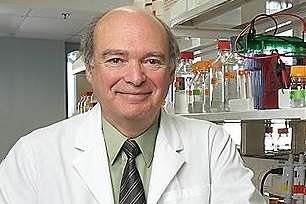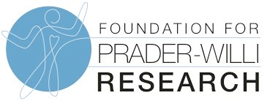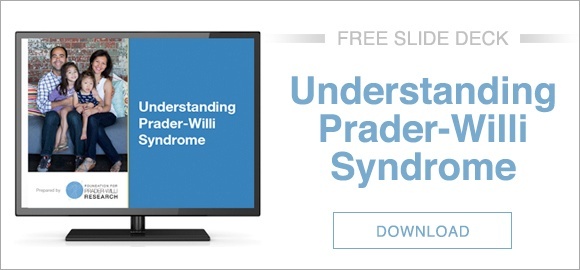 Prader-Willi Syndrome (PWS) most commonly results when a set of key genes are missing on the paternal 15th chromosome (deletion) — or else when the paternal chromosome has been entirely replaced by a maternal copy (uniparental disomy, UPD). One of the most frustrating aspects of PWS is the fact that perfectly reasonable versions of the missing 15th chromosome genes exist — i.e., the maternal copies. This is true whether PWS arises by deletion, UPD or an imprinting mutation. However, regardless of the genetic mechanism causing PWS, these maternal genes are silenced, so that they do not perform the function of the missing paternal genes.
Prader-Willi Syndrome (PWS) most commonly results when a set of key genes are missing on the paternal 15th chromosome (deletion) — or else when the paternal chromosome has been entirely replaced by a maternal copy (uniparental disomy, UPD). One of the most frustrating aspects of PWS is the fact that perfectly reasonable versions of the missing 15th chromosome genes exist — i.e., the maternal copies. This is true whether PWS arises by deletion, UPD or an imprinting mutation. However, regardless of the genetic mechanism causing PWS, these maternal genes are silenced, so that they do not perform the function of the missing paternal genes.
What if it was possible to activate the silenced maternal genes? Such activation is the goal of Dr. Marc Lalande’s research, which has been supported by FPWR in three funding cycles. We recently chatted with Dr. Lalande and learned about his life and career, and some of the fascinating techniques that he and his lab are using to recover the function of these silenced maternal genes.
Genetics By Way Of Physics — and Meteorology
Dr. Lalande’s early background is somewhat unconventional compared to those of other leading PWS researchers. He obtained an undergraduate degree in physics from Laurentian University in Canada, and even worked as a meteorologist for a few years. He then switched gears, deciding to attend graduate school in medical biophysics at the University of Toronto. Following his PhD, Dr. Lalande moved to Boston as a postdoctoral researcher at both Harvard Medical School and Boston Children’s Hospital.
After a three-year stint as an Assistant Professor at McGill University, Dr. Lalande moved back to Harvard Medical school as an Associate Professor and Assistant Investigator at the Howard Hughes Medical Institute. Since 1998, he has been at the University of Connecticut, where he is currently the Chair of the Department of Genetics and Genome Science, and the Director of the University of Connecticut Stem Cell and Systems Genomics Institutes.
Dr. Lalande’s route to studying PWS began in graduate school, where he helped to design an instrument to sort cells into different types using fluorescent dyes. He used this technique to study how white blood cells in our immune system work. Dr. Lalande’s research on cell sorting prepared him for work as a postdoctoral fellow separating chromosomes and studying their DNA content. Notably, these studies included chromosome 15, which contains the PWS region.
Discovering the Role Of Genetic Imprinting In PWS
Over the past three decades, Dr. Lalande has played a leading role in forefront studies of the genetics of PWS and Angelman’s syndrome, both of which result from the disruption of a particular region of chromosome 15. Perhaps most importantly, these studies include the discovery that genetic imprinting, i.e., the silencing of maternal [paternal] genes in the case of PWS [Angelman’s], is one of the basic processes underlying PWS. Imprinting is a normal genomic process, but the problems associated with PWS most commonly arise when the activated paternal copies of certain genes on the 15th chromosome are missing (either through a deletion on the paternal chromosome, a duplication of the entire maternal chromosome 15, or a specific mutation disrupting the imprinting process), leaving only the silenced maternal copies.
Over the last several years, Dr. Lalande’s research on PWS, supported by FPWR, has focused on a couple of key directions: First, the Lalande lab has worked on techniques for taking skin cells of individuals with PWS, programming them to become stem cells, and then generating neurons (i.e., brain cells). These artificial PWS neurons play a key role in developing a good stem cell model for PWS and in understanding what is different about brain cells in individuals with PWS. The PWS neurons will also be crucial for figuring out how to turn on the silenced, or “imprinted” maternal genes underlying PWS.
Activating Maternal DNA In PWS Neurons
Determining how exactly to activate the imprinted maternal PWS genes constitutes another major focus for Dr. Lalande’s lab. Central to this question is understanding how the maternal genes are switched off in the first place. Along these lines, Dr. Lalande and his group have identified a certain protein, ZNF274, which plays an important role in silencing maternal genes in the PWS region. Their goal is to understand what happens if ZNF274 is either destroyed or otherwise prevented from attaching itself to the chromosome near the PWS region, since the binding of ZNF274 to the sites of PWS-specific genes appears to cause the genes’ imprinting in brain.
In this research, Dr. Lalande and his group are attempting to activate the maternal DNA in the PWS neurons that they’ve generated from stem cells. Based on these experiments, Dr. Lalande hopes to understand how exactly the switching on and off of maternal genes works, and what subset of PWS genes can be switched on by interfering with ZNF274.
Ultimately, Dr. Lalande hopes that his experiments with ZNF274 and PWS neurons will lead to therapeutic approaches for PWS. Important challenges include figuring out which time (i.e., which developmental stage) is best for gene activation, and also how best to implement the gene activation in humans (i.e., through the development of effective drugs). Although it is very expensive to develop stem cell models for PWS, and extremely challenging to sort out the complex genetics associated with this disorder, the potential pay off for treating — or even curing — PWS is huge.
Dr. Lalande is very optimistic about the future of PWS genetics research. In particular, he feels that recent developments in generating human stem cells and gene editing will have major impacts on the health of those with PWS. He's also been very motivated in his research by meeting the families of individuals with PWS, and heartened to see so many families coming together to support a common cause — i.e., PWS research.
Working in the lab and leading the Stem Cell Institute and Genomics and Personalized Medicine Program at the University of Connecticut keep Dr. Lalande very busy. Outside of work, though, he loves spending time with his family, including his two grown children and two grandchildren.








